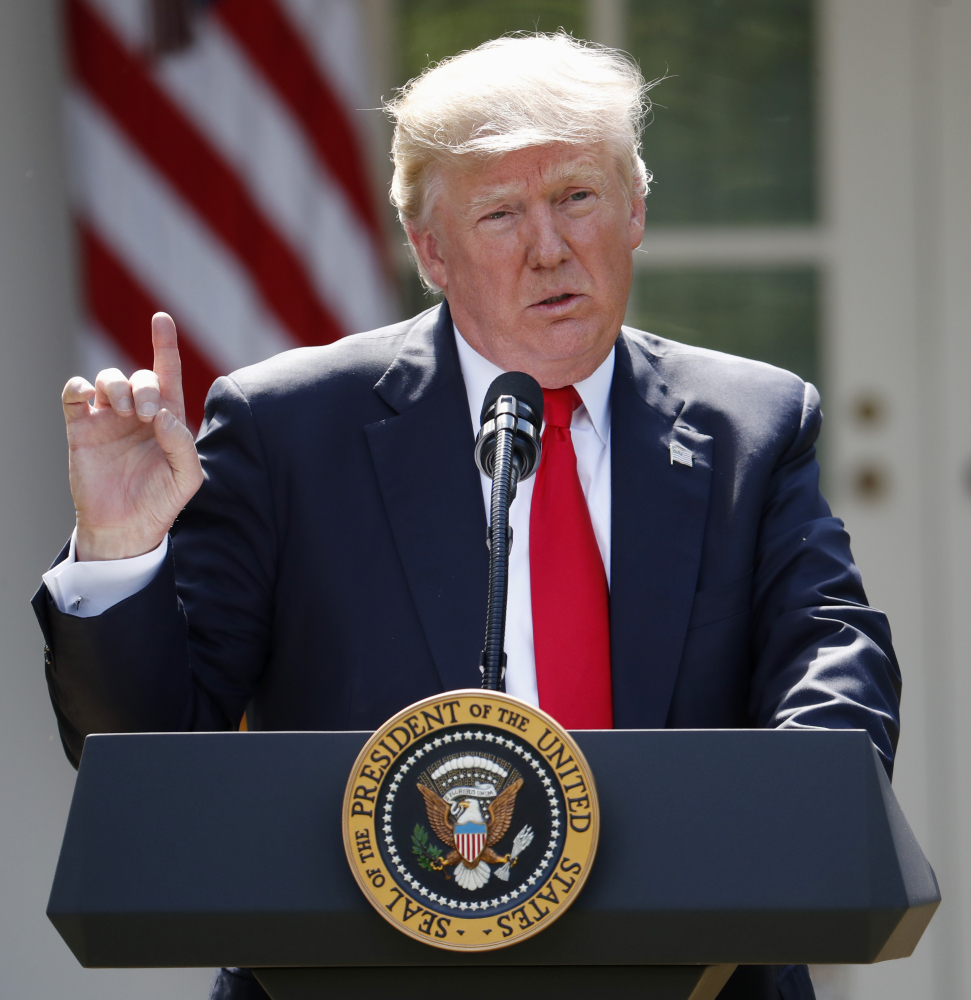WASHINGTON — The Trump administration on Friday officially told the United Nations that the U.S. intends to pull out of the 2015 Paris climate pact.
But the State Department’s announcement doesn’t formally start the process of the U.S. getting out of the voluntary agreement. That’s still to come.
Still, the department described its communication as a “strong message” to the world, following President Trump’s decision in June to leave the accord.
“The State Department is telling the U.N. what the president already told the world on June 1 and it has no legal effect,” said Nigel Purvis, who directed U.S. climate diplomacy during the Bill Clinton and George W. Bush administrations.
Purvis said countries can’t withdraw from new international agreements, including the Paris climate one, until three years after they go into effect. The Paris agreement went into effect on Nov. 4, 2016.
Then the process takes a year.
The State Department cited the same timeline, saying it can officially start withdrawing as soon as November 2019. That means the earliest the U.S. can be out of the climate agreement is Nov. 4, 2020 – the day after the next presidential election.
In a statement, the State Department said the U.S. will continue to participate in international meetings and negotiations on current and future climate change deals. The next meeting is in Bonn, Germany, in November.
Trump is “open to re-engaging in the Paris Agreement if the United States can identify terms that are more favorable to it, its business, its workers, its people and its taxpayers,” the department said.
Under the agreement, countries set their own national plans for cutting climate emissions. That means Trump can come up with different targets for the United States than those set by President Barack Obama. But Trump can’t unilaterally change the text of the Paris deal.
Under Obama, the U.S. agreed to reduce polluting emissions more than a quarter from 2005 levels by the year 2025. There is no climate court. All that’s required in the agreement is a plan and reporting on progress toward reaching self-set goals.
No matter what the U.S. does, the Paris agreement remains in effect because enough other countries ratified it.
The Paris agreement aims to prevent the Earth from heating up by 3.6 degrees Fahrenheit since the start of the Industrial Revolution. It has already warmed about 2 degrees
Send questions/comments to the editors.



Comments are no longer available on this story